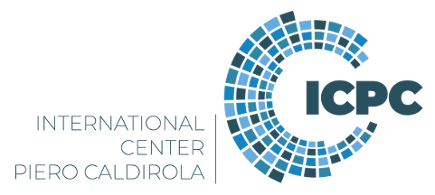Speaker
Description
The Phase Contrast Imaging (PCI) diagnostic is an absolutely calibrated internal reference interferometer that creates an image of line-integrated electron density fluctuations [H.Weisen, Rev. Sci. Instrum. 59 1544 (1988)]. Detector arrays with appropriate frequency bandwidth are used to extract the spatial structure of the plasma imaged by the diagnostic.
A novel PCI system has been developed to measure the internal structure of waves and turbulence in fusion grade magnetically confined plasmas across an unprecedented range in frequency and wavelength. This is accomplished by changing the wavelength of the probing laser beam from the Mid InfraRed ($10.59~\mu m$) to the Near InfraRed region ($1.55~\mu m$). The shortening of the probing laser wavelength delivers two key advantages. Firstly, perturbations of a given wave-number scatter off the probing laser beam at an angle that is reduced by a factor of 7 which, for a given maximum scattering angle permitted by in- and ex-vessel apertures along the laser beam path, gives access to higher wave-numbers approaching actual electron scale fluctuations at $k\rho_e\simeq1$. Alternatively, any given fluctuation wave-number can be collected by 7 times smaller optics or by the same size optics located 7 times further away from the plasma. Secondly, the system capitalizes on the considerable progress in the NIR region made by research and development programs in the telecommunication and military sectors. More specifically, low noise room temperature detector arrays are readily available with GHz frequency bandwidth, i.e. almost three orders of magnitude larger than that of existing systems. This allows to directly digitize data without using complex heterodyning detection schemes. Examples of such phenomena include fast particle modes, such as Ion Cyclotron Emission, and waves used for current drive in large scale devices, such as Helicon. Additionally, high quality lasers, optical components and imaging tools suitable for remote alignment tasks are available off-the-shelf and at a much lower price; maintenance overhead is also reduced as detectors are not cryogenically cooled.
Phase plates, custom mirrors with engraved grooves that are at the heart of the PCI technique, were successfully developed for light at $1.55~\mu m$ with two methods at a competitive price: masked coating and a micro-technology lift-off process. The latter technique provided grooves of exceptional quality with a few nano-meter accuracy.
Bench-top tests using a PCI prototype and calibration sound waves demonstrated excellent wavelength measurements with the expected response. The observed signal-to-noise ratio is of the order of the theoretical minimum expected from specifications of the various components used.
The increased wavenumber-frequency bandwidth, the easier accessibility to components and remote alignment tools, along with lower maintenance overhead, makes this system relevant to future large devices where access to the optical system will be restricted and optical paths will be much longer than in present day machines.
Work supported under US-DOE award DE-SC0018095

